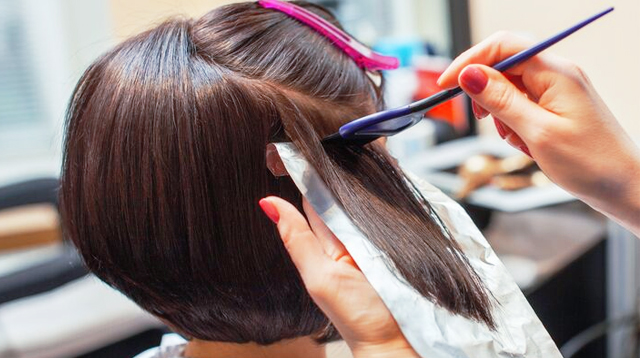Is your hair lackluster, limp and the ends more tangled than normal? Does the hairbrush end up looking like a squirrel’s tail every time you brush it? Do your natural curls bounce back after a wash, or is the hair limp and rough?
If you answered yes to more than one of those symptoms, you have failed the heat and chemical damage test.
Here are 5 simple practices to start you off on a healthy hair journey.
Use appropriate hair products
Reading the ingredients on hair products should be added in the list of your to-dos if you’re seeking to restore its health.
Use a sulfate-free shampoo and appropriate products that do not contain parabens or petrolatum. Harsh products such as hydrogen peroxide dyes should not be anywhere near your lovely mane.
Adopt DIY products to reduce the usage of manufactured products. Rice water is good for hair growth; egg and mayonnaise make awesome treatment if you can stand the smell. Mashed avocado and honey are perfect hair and face masks.
It’s paramount for any products that will make your crown of glory worse than it is to be thrown into the trash.
Only brush your hair when it’s dry
If you’re already experiencing hair loss, brushing it when it’s still wet makes it worse. Wet hair is brittle hair. And brushing it in a bid to detangle causes more shedding since the shafts swell when wet.
Instead, wrap an absorbent cloth on your head to absorb the water. Do not wring and rub life out of your tresses. Let it air-dry before any manipulation.
Apply some leave-in conditioner and use a wide-tooth comb to take away the kinks smoothen it out.
Shield the hair from harsh elements
Heat and chemical-damaged hair need to be protected from harsh environmental elements to heal.
Wear a hat for the sun or a scarf for the very cold days. Frequent swimmers’ hair must be protected from the chlorine by applying a waterproof sealant such as coconut oil or olive oil. These products are also great for preventing frizz which leads to more damage.
And do not take the plunge without your swim cap on.
Have a protective style on for a while for the hair to hibernate and rejuvenate. Loose braids cornrows would be good to give your mane a break. If your hair texture does not allow such styles, a wig will come in handy.
Deep conditioning and protein treatment
Damaged hair needs a proper balance of deep conditioning and protein treatment. A protein treatment helps the hair keep its normal structure while a moisture treatment helps it retain its elasticity and shine.
Moisture treatment can be applied weekly while a protein treatment is recommended once a month.
Get rid of oil and dirt before treating and conditioning. Avoid staying too long with treatment or wash-out conditioner. Over-conditioning leads to hygral fatigue which eventually causes more hair loss.
Love is in the hair
A change in your regimen will help to nurse the hair back to its health and bounciness. With a little patience and TLC, your tresses will show a difference.
Read Also:
